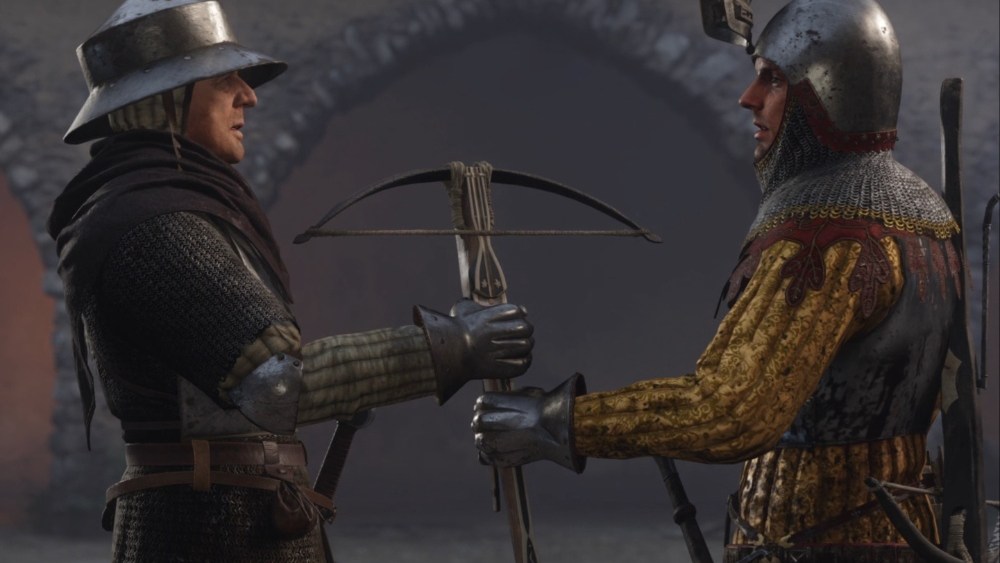Every weekday around 3 p.m. local time at the federal courthouse in lower Manhattan, a frenzy begins. Following hours of sensational testimony and evidence in the sex-trafficking and racketeering trial of hip-hop and fashion mogul Sean “Diddy” Combs — whose nosedive as a cultural icon after three decades of success seems to sink him further from those heights as new victims take the stand to implicate and denounce him — you’ll spot the first trickle of media types, supporters and everyday folks stepping out of the rear entrance at Manhattan federal court. Some are frantically typing on their just-returned smartphones (which are contraband inside the building), instantly relaying the lurid details from the day’s testimony; others make a beeline to catch the uptown 6 train beneath nearby City Hall to a midtown newsroom. After watching hour upon hour of often harrowing allegations of forced sex, battery of women, coercion, gaslighting and emotional cruelty by a romantic partner, which the women named as Combs’ victims have delivered nearly every weekday for five weeks, some of the people exiting the courthouse, with no newsroom or editor to speak of, quickly attach their phones to tripods or selfie sticks to spill the courtroom tea du jour online. Soon, a black van is spotted pulling up to 500 Pearl Street, and it’s time to race around to the front of the courthouse to capture the afternoon’s most valuable moment.
Here, a scrum of livestreamers, YouTubers and TikTok influencers coalesce to snag footage of the Combs family leaving court. Janice Combs, the defendant’s mother, who, after his father was killed, raised him 30 miles north of the courthouse, is the most sought-after photo subject as she attends the trial daily. A moment of chaos erupts when Janice, 83, exits the court and walks the 20 feet to a vehicle that’s just arrived. “Janice! I’d drink your bathwater!” one young livestreamer yells out a few weeks into the trial (he was referencing dialogue from The Color Purple, he tells me later). Janice’s popularity during this trial is followed by that of her grandsons, King and Justin Dior Combs, both make for big moments for the livestreaming set — or for their viewers, rather, as 100s or, for some, 1000s are watching and commenting in real time, fueling the online Diddy media industrial complex.
It’s a classic media frenzy moment, but these are not typical media professionals. The livestreamers have stepped into the Diddy trial beat for the past eight weeks, bringing a wide range of voices as they discuss the legal case and the defendant’s unlikely life story. It could come with a trigger warning: “Not only will there be discussions of domestic violence and emotional abuse, while creating content, you might fall down a rabbit hole leading to unfounded comparisons to Jeffrey Epstein and the collection of kompromat, wild speculation about every celebrity who’s met the rapper and, in turn, link already unfounded rumors to QAnon.” All of this and more has already happened online amid the explosion of Diddy-related video content that came after Casandra “Cassie” Ventura filed her civil suit against Combs and again after his arrest. Sure, not all of the new media creators and livestreamers are guilty of creating any of this dangerous clickbait, but they stand outside the courthouse in its context and the wild possibilities of revelations at his trial that are now butting up against the the reality of this case: it’s grounded in reality and about a handful of people, most of whom are not famous.

The front entrance of 500 Pearl St. in New York amid Sean “Diddy” Combs’ federal trial on sex-trafficking and racketeering charges.
THR/Kevin Dolak
The trial’s livestreaming players each come with a unique delivery style, that’s less polished or familiar and rife with the slang du jour. Among this gang of street journalists are the sometimes frantic and frazzled but, more often than not, sharp and informative explainers of YouTuber Tisa Tells; the conspiratorial voice of FamerTube; the comedy trial coverage of first-timer Sam Croupen, who has a 510,000 follower and growing TikTok fanbase; and the wildly popular Rotten Mango, aka true crime podcaster Stephanie Soo, who has taken up the Diddy trial and is running with it so successfully, she overtook Joe Rogan as the top podcaster on YouTube. This trial and the non-professionals covering it have been commanding the eyes and ears of so many that the old guard is even finally playing nice, at least anecdotally.
“The way that the mainstream has treated influencers has changed so much,” said Brianna Logan, who told The Hollywood Reporter she is in New York after crowdsourcing funds and has covered several big trials for her Instagram account. “I think when I was covering Ghislane Maxwell, it was so disrespectful, the way I was treated. Like, ‘Give me that seat! I want to sit there,’ and they’re like, ‘Oh, cute. You’re on Instagram.’ They’re just so much more respectful now. It’s different. I think they have to acknowledge that their numbers are down. Social media numbers are up — there’s no denying that. And it’s probably good of them to admit that there is a change happening.”
Behind us, across Pearl Street, distanced from this new media gaggle, stands the media’s old guard, firmly set up with expensive cameras and weather-protective canopies in a neat row on the west side of Columbus Park. Hair and makeup are on point. But it’s unclear if these camera-ready reporters are actually inside watching the trial unfold each day before their stand-up live shot. This may not matter because legacy media outlets have an entire apparatus moving information from the courtroom, fodder for live blogs published in near-real-time, giving a detailed rundown of testimony, feds vs. defense courtroom tension, Combs’ silent antics with the jury and Judge Arun Subramanian’s shifting mood. What all of this costs the networks and cable news outlets is surely sizable; what’s produced is beholden to the many limitations or traditions of TV news: outmoded news segment formats, restrictive standards and red tape and, often, middle-of-the-road story selection. The result? Legacy media isn’t getting the full Diddy trial story as some of it unfolds right in front of their poised cameras.
The contrast between these two groups of media figures — all parties being content creators, after all — and their proximity to the court when it lets out at 3 p.m. feels too on the nose. With online news’ pivot to video nearly a decade ago and the TikTok and influencer era that followed, impactful on-camera reporting has shifted away from the stoic, as-neutral-as-possible, serious journalist to the selfie-style-shooting, personable, quirky novice who caters to an audience of their own creation. On any given weekday outside Combs’ trial, content creators and livestreamers shout rundowns and takes to their followers, some even fielding legal questions. The problem for many is that these livestreams are often unpolished and, at times, messy, with cringe-inducing errors, admissions of having “no idea what I’m talking about.” This has always been an uncomfortable fact around the democratization of media and the rise of individual voices as news sources on social media, Substack, YouTube and the rest. With the backbone of a news report, namely fact checking and sourcing, jettisoned in favor of trust cultivated by personality-driven influencers and popular takes, will the truth slip out of the old idea of journalism: holding truth to power?
This slippage is occurring amid some upsetting trends for the old guard and great news for digital platforms. According to the Pew Research Center, 86 percent of Americans turn to digital devices for news, with two-thirds using news websites and apps and around half getting news directly from social media channels. Meanwhile, 23 percent say they prefer to get their news from apps and websites, but those who prefer social media news rose 6 percent to 18 percent. This is deeply relevant to this moment and the Combs’ narrative and trial, which comes 30 years after television and cameras in the courtroom rattled the O.J. Simpson trial, which may have affected public opinion and contributed to the case exposing deep national divides along race. The influencers and livestreamers may not have such an impact here, but the size and diversity among the audiences they command and, at times, can mobilize shouldn’t be ignored.
“You get just so many passionate people telling stories and creating content in different ways,” creator Emilie Hagen told THR outside the federal court. “And you have people that are sleeping outside as a career right now, just aiding the culture of Diddy. It shows what he built, and it shows why the stakes are so high.”
Hagen, one of several one-woman producer-hosts milling about the courthouse perimeter each day, also dabbles in comedy, written journalism and ghostwriting. She had garnered attention online by meticulously preserving rapper Kanye “Ye” West’s oft-deleted X.com missives and rantings (@kanyesposts). Since she crowdfunded her followers to fly to New York for Combs’ trial in mid-May, she’s been uploading rapid-fire clips, consisting of her roving around the Diddy trial happenings outside of the Pearl Street federal courthouse. She posts her incisive and, at times, revealing work on the regular platforms: Instagram, which gets the bulk of her traffic; YouTube; and Twitch. She arrived from California, as she told THR in an interview, “more interested in documenting the chaos surrounding the courthouse, what characters it attracts, and what the culture like is outside the courthouse.”
Hagen’s move was wise at this untelevised trial, where phones or even vapes won’t move past security — you could even say it was prescient. She was the first to nail down the story behind a group of seemingly unhoused and potentially high men and women donning “Free Diddy” T-shirts who had gathered in Columbus Park. What looked like a semi-transparent orchestrated pro-Combs protest turned out to be a promotion for Diddycoin, a cryptocurrency launched by two of Combs’ sons. That this stunt took place feet from the cameras owned by the networks and was missed but exposed by a roving livestreamer speaks more than that the story was confronted by a tenacious reporter. Hagen has also revealed, by simply walking over, phone extended and asking for an interview, the identity and firsthand account of the woman who was dragged from the courtroom after running to the front of the gallery and yelling to Combs; mainstream outlets largely referred to Jacqueline “Candor” Williams as an “unidentified woman;” and when West arrived in court, Hagen was kind enough to provide THR with some of the details of his visit.
“These characters are as much a part of the trial, I think, as the people inside,” Hagen said, referring not only to the estimated two dozen livestreamers documenting the trial’s major revelations and its strange fringes, but also everyone in the spectacle: the angry man who arrives daily to rant at the crowd, the man who turned up in Renaissance-era garb, the revelers and the Diddy truthers.
Some of the livestreaming new guard feel an ownership of the Diddy story that the mainstream media hasn’t earned — or forfeited by not covering Cassie Ventura’s 2023 civil suit against Combs. They watched as interest from the networks and other mainstream outlets grew after Combs’ quick settlement out of court came the next day. They noticed as Combs’ legal woes became a hot story and then possible RICO case. The interest outside of streaming gradually grew with civil lawsuits and complaints, and then exploded with a salacious civil case in February 2024 from producer Rodney “Lil Rod” Jones. From there, the Diddy headlines came daily and eventually were unavoidable. For livestreamers like Donat Ricketts, a.k.a. Donat POV, this is tantamount to theft of services.
“I’m the most viral thing out here,” Donat tells me outside the courthouse as we wait for the Combs family to depart for the day. “Like, getting them engaged, actually having critical thinking and viewpoints. I understand a lot.”
Donat explains how he shadowed under different lawyers in Los Angeles in a four-year program but says he decided he doesn’t want to be a lawyer, because you have to “get indoctrinated.” He’d rather livestream from the big trials of rappers and others who will help him grow Donat POV’s audience. But the media trying to take over from here stings, he says.
“I think the significance of this case, in this very moment, is showing the power of streaming platforms,” he told THR. “You gotta understand something: When Cassie filed a lawsuit before the prosecutor and they sent Diddy a letter. I have a video [from then] with 650,000 views talking about Diddy — we’re the ones who really amplified this. The mainstream media is playing catch-up, and we always said that we weren’t gonna let mainstream media take authority over something that we did the work to investigate.”
Donat’s coverage of the Combs trial — personality-driven, entertaining (if unpolished), informed but not always correct, deeply engaged with its audience — encapsulates the advantages and pitfalls of the imperfect medium. Influencer content and livestreaming’s continuous audience-gobbling from the mainstream’s old guard is not an “if” question but a “how much” question on quarterly damage assessments amid shrinking resources for newsrooms. As for the persistent pitfalls of the one-person newsroom — no fact-checking, no logistics, no security or crisis training and just too much information for one person to process and deliver — it seems that some of the deeper and most problematic issues of this encroachment will go unaddressed, at least for now.
“I think people are trying to uncover something big,” Hagen said about her coverage. “I’m trying to capture a moment in culture, emotionally. Traditional media can’t really explore that. CNN can’t be talking about their emotions. They just have to stick to the facts.”















Leave a Reply